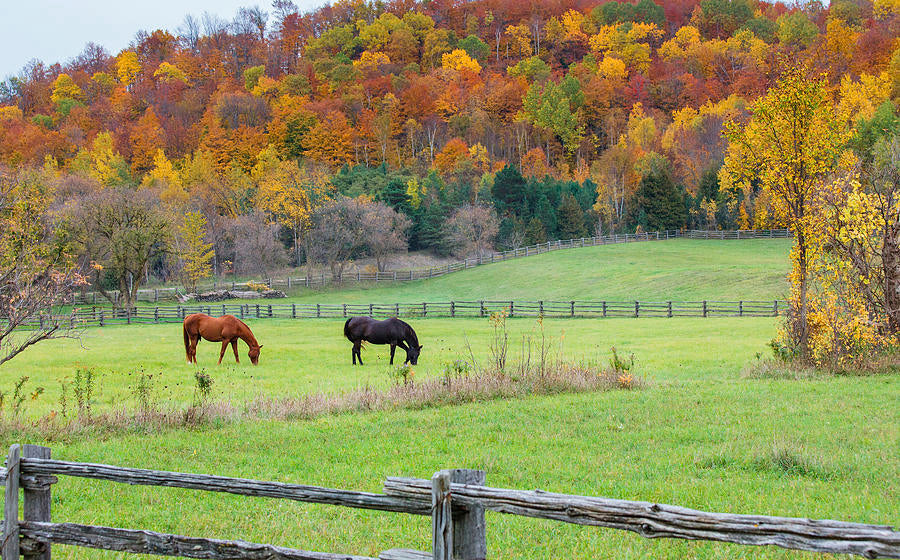
Textiles That Carry the Season
Fall’s Quiet Shift: How to Layer Textiles with Intention
Out here, fall doesn’t arrive with fanfare. It settles in slowly—through the light, the air, the way the animals move. At Diamond W Ranch, we don’t mark the season with decorations. We mark it with readiness.
Jesse’s already out in the barn, checking fences, wrapping water lines, stacking hay in tight rows. The horses get a little thicker around the middle. The dogs sleep longer in the sun. And inside the house, I start layering too—not just for warmth, but for rhythm. For the quiet shift that tells us it’s time to settle in.
Preparing the home for fall is no different than preparing the land. It’s part of the same heritage. The same instinct. The same care.
1. Begin with Grounded Fibers Just like we swap out fly sheets for winter blankets on the horses, the home asks for sturdier materials. Lightweight cottons give way to wool, canvas, and linen blends with body. These fibers don’t just decorate—they hold. A thick linen curtain buffers the morning chill like a windbreak along the pasture fence. A wool runner across the table settles the space the way a row of hay bales steadies the barn—solid, intentional, ready for the season. They carry weight, and with it, a sense of purpose.
2. Let Texture Do the Talking Texture is the quiet language of warmth. It’s what you feel when you come in from feeding, kick off your boots, and reach for a throw. Nubby wool. Hand-quilted cotton. Woven pieces that show the maker’s hand. These aren’t accents—they’re invitations. Texture slows you down. It’s the same grounded pause as brushing out a horse at dusk—dust rising, muscles softening, the rhythm of care settling in. It says: stay awhile. It says: you’re home.
3. Choose Colors That Belong to the Land Fall doesn’t need bright. It needs grounded. Undyed wool. Muted rust. Weathered ochre. These are colors that feel earned—like they’ve come through a season of sun and soil. They echo the hay in the barn, the dust on the boots, the last light over the ridge. They’re the same tones that settle into the fields after harvest, that cling to the dogs’ coats after a run, that show up in the pantry jars and the sky. Let the material speak before the pigment does.
4. Layer with Purpose, Not Excess Every layer should serve. A wool throw at the foot of the bed isn’t just for show—you reach for it when that first chill settles over you in the middle of the night—quiet, instinctive, familiar. A second cushion on the bench makes sitting longer feel natural. A heavier towel in the kitchen absorbs more than water—it absorbs the season. These aren’t props. They’re part of the same instinct that has us hauling out heated water buckets, raking leaves into windblown piles, mulching the beds before frost, scrubbing down the barn. The last tomatoes are tucked away, garlic cloves pressed into the soil. Horses kick up their heels in the crisp morning air, breath rising like smoke. We watch the forecast. We settle in.
5. Honor the Story in the Material If it’s hand-dyed, say so. If it’s made from reclaimed wool, share that. The provenance is the point. At Diamond W Ranch, we don’t just stock textiles—we stand behind the stories they carry. A blanket isn’t just warm—it’s a record of the hands that made it, the sheep that grew it, the land that shaped it. Like the feed charts taped to the barn wall or the calves bawling at the gate during weaning, it’s part of the rhythm we live by. The home holds those stories the way the tack room holds the scent of leather and linseed. It’s all connected. It all matters.
Fall doesn’t ask for reinvention. It asks for readiness. For weight. For warmth. For the kind of quiet that holds.
Browse our Heirloom Bedding & Throws collection to find pieces that carry the authentic spirit of ranch living into your home.

